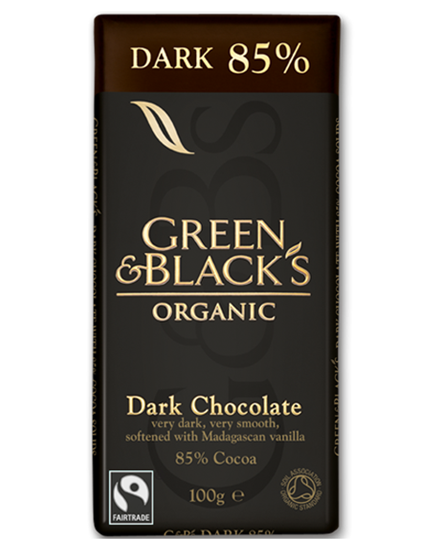Whilst attending a Breeder Education Seminar in November 2013 Nick Sutton gave a talk regarding canine poisons and particularly the most common reported items that vets and the Veterinary Poisons Information Service (VPIS) had listed. The following article is based on notes taken during that lecture and the subsequent question and answer session with full credit going to Nick Sutton for the contents and information. This is not an exhaustive list, but if you are unfortunate enough to be in the position where your dog may have been poisoned veterinary advice should always be sought, particularly before administering any treatment that may cause harm to your dog.
Definition: A poison is a chemical which, when introduced, has an unwanted effect.
Anything can be poisonous to an animal if it is exposed to enough of it.
- Poisons can be placed into the following 6 categories: Pharmaceutical Products: vet or human medications such as tablets, capsules or liquids
- Pesticides: insecticides, herbicides, rodenticides, slug baits Household Products: Cleaners, stain removers, fabric protectors Toxins (natural poisons): poisonous plants, fungi, venomous animals
- Industrial Chemicals: Acids/alkalis, dyes, solvents Drugs of Abuse: Cannabis, cocaine, ecstasy, heroine etc.
There are different ways in which animals can become exposed to any type of poison; ingestion, inhalation, eye contamination, skin contamination, injection, bites and stings, other routes.
In 2010 the VPIS published that the top 10 enquiries for dogs being poisoned were as follows:
- Ibuprofen
- Chocolate
- Rat bait (Difenacoum)
- Rat bait (Bromadiolone)
- Paracetamol
- Oral contraceptives
- Slug bait
- Agent not known
- Diclofenac
- Adder bites
For the purposes of this article we will only concern ourselves with 3 common poisons that generally cause the most level of concern to dog owners.
Chocolate: Not surprisingly the instances of possible chocolate poisoning reported to vets peaks at Christmas and Easter! All chocolate contains a chemical called theobromine to some degree, which is similar to caffeine in many ways. Theobromine stimulates the myocardium and central nervous system and has symptoms that look very similar to caffeine poisoning.
The symptoms include tremors, convulsions, twitching and cardiac effects. Chocolate is poisonous to most animals and stays in the systems for a long time, but as well as ordinary chocolate, theobromine can also be found in other products such as cocoa shell garden mulch, so owners must be extra vigilant. In most cases the dog makes a full recovery, but dogs have a very individual reaction to chocolate, where some animals can tolerate much larger amounts than others. As a general guide, dogs will need veterinary treatment if they have consumed more than the following amounts (amount of chocolate compared to the body weight of the dog):
White chocolate
more than 2.2kg per kg of body weight
Milk chocolate
more than 9g per kg of body weight
Dark chocolate
more than 1.25g per kg of body weight
If your dog has consumed more than the above then contact your vet immediately and they will advise as to treatment, which usually consists of administering emetics to make the dog sick and also repeated doses of activated charcoal to ‘absorb’ the chemical. Never try to induce the dog to vomit at home unless your vet advises you to do so. As you can see from the difference in the amounts (2.2 kilograms of white chocolate compared to only 1.25 grams of dark chocolate), darker chocolate contains far more theobromine than white or milk chocolate.
Therefore an 80kg Irish Wolfhound could consume a whopping 176kg of white chocolate and not suffer any long lasting effects, but an average 100g bar of dark chocolate could be disastrous!
Grapes, raisins and sultanas : these fruits/dried fruits are toxic to a variety of animals, but the reason for their toxicity is largely unknown. Some current theories as to why such fruits should be poisonous include:
- Canine tannin intolerance
- Contamination by moulds
- Pesticides
- Heavy metals (not the music kind!)
- Sugar overload (these fruits have a high fructose content)
- Enzymatic differences
- Excessive amounts of vitamin D
These are another example of poisons that vary from dog to dog and some animals can tolerate higher amounts whereas other dogs may consume 1 fruit and suffer terrible effects. Symptoms appear between 6 and 24 hours after consumption and initially show as gastro-intestinal problems (vomiting, diarrhoea etc.), but later renal failure can occur. Vets treat this type of poisoning by again inducing vomiting and giving activated charcoal, as well as aggressive IV fluid therapy for 48 hours and renal function of the dog will be monitored for at least 72 hours.
Not surprisingly, instances of dogs consuming these foods also peaks at Easter and Christmas and during these holiday seasons it is easy to forget about the hidden dangers for our dogs which are contained in foods we love.
Adder - the only venomous snake in the UK
Adders: the Adder is the only venomous snake we have here in the UK and they live in the South, Southwest of England, Scotland and coastal regions with sand or sandy dunes. An Adder has black zigzag marking on its body and an X or V mark on its head and the eye has a vertical slit. Adders hibernate over Winter and emerge in early Spring and mate between April and May.
If your dog has been bitten the effects show up within 2 hours (although some dogs can show signs only after 12 hours). The effects from a bite are:
- Oedema (build up of fluid in the tissues causing swelling)
- Lethargy
- Depression
- Pain
- Vomiting
- Collapse
Dogs that have been bitten take around 5 days to recover and most make a full recovery with no long lasting effects. Dogs that are suspected of being bitten by an Adder should be kept still and quiet and the bite should be left alone and the dog observed for a minimum of 12 hours. Your vet will administer IV fluids and contrary to popular belief, anti venom is not usually administered as it is difficult to get hold of and some dogs can react badly to it.
General Guidelines
If you suspect your dog has been poisoned, asess the situation and don’t panic!
- Call your vet
- Decontaminate the dog if required*
- Take the dog to the vets (unless they advise otherwise)
- If vet attention is not required then watch your dog at home
(to decontaminate a dog with skin contamination; wash the fur with luke warm water, use mild detergent, never use household cleaners, thoroughly remove, dry the dog)
24 HOUR EXPERT ADVICE FROM VETERINARY POISON SPECIALISTS
WORRIED YOUR PET
MAY HAVE BEEN
POISONED
Animal PoisonLine is run by the Veterinary Poisons Information Service (VPIS) and is the only 24-hour specialised emergency telephone service in the UK dedicated to helping pet owners who are worried their pet may have been exposed to something harmful or poisonous.
Based on the information you provide the vets and scientists will be able to tell you if you need to go to the vets for immediate treatment or whether we can save you the trip.
They have experience of thousands of toxic substances in all animals and cover everything from human drugs, household and garden products, plants, agricultural chemicals to venomous bites and stings.
They are veterinary poisons specialists and therefore, regrettably, cannot help with any other veterinary enquiries unrelated to poisoning.






